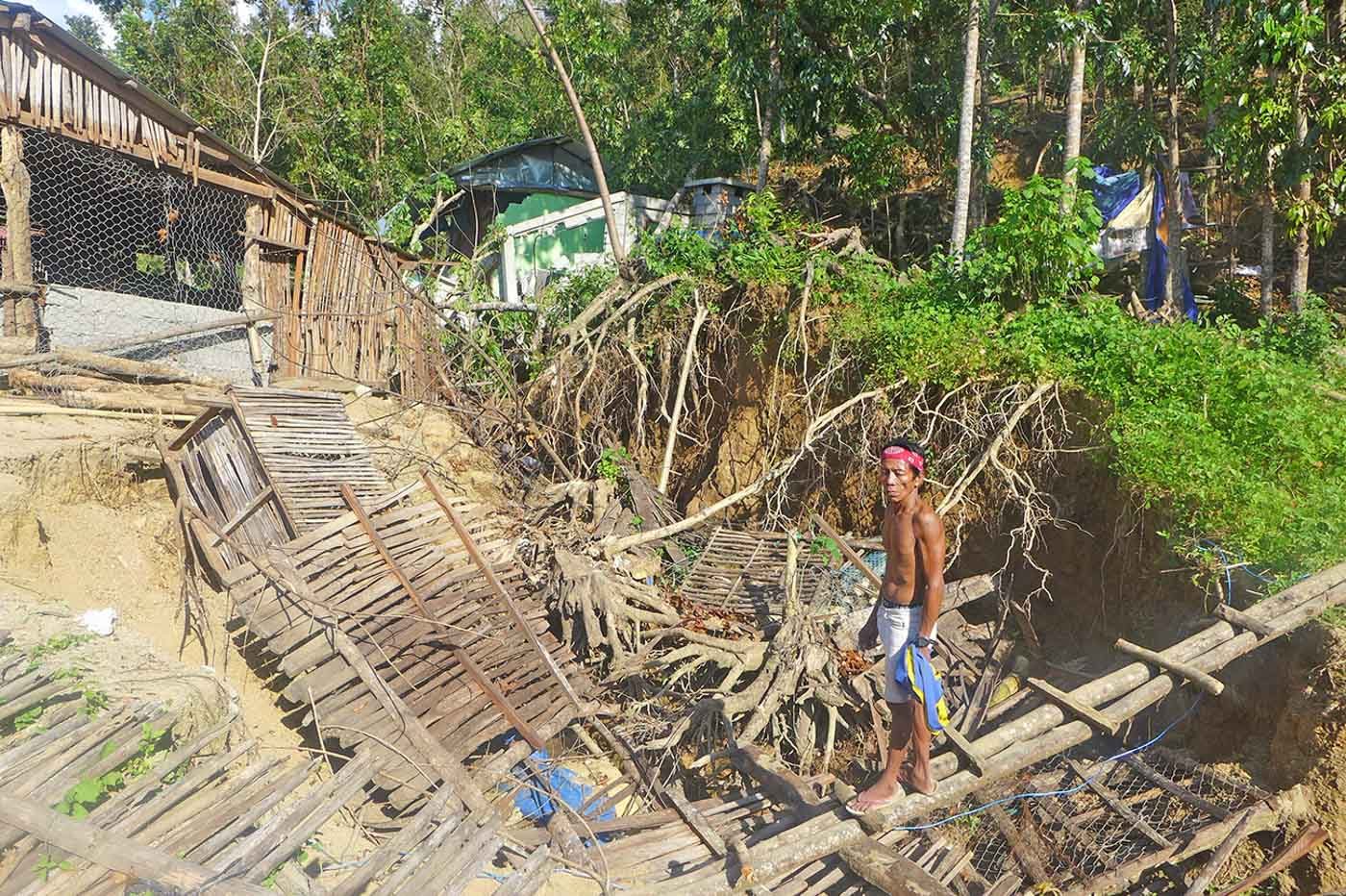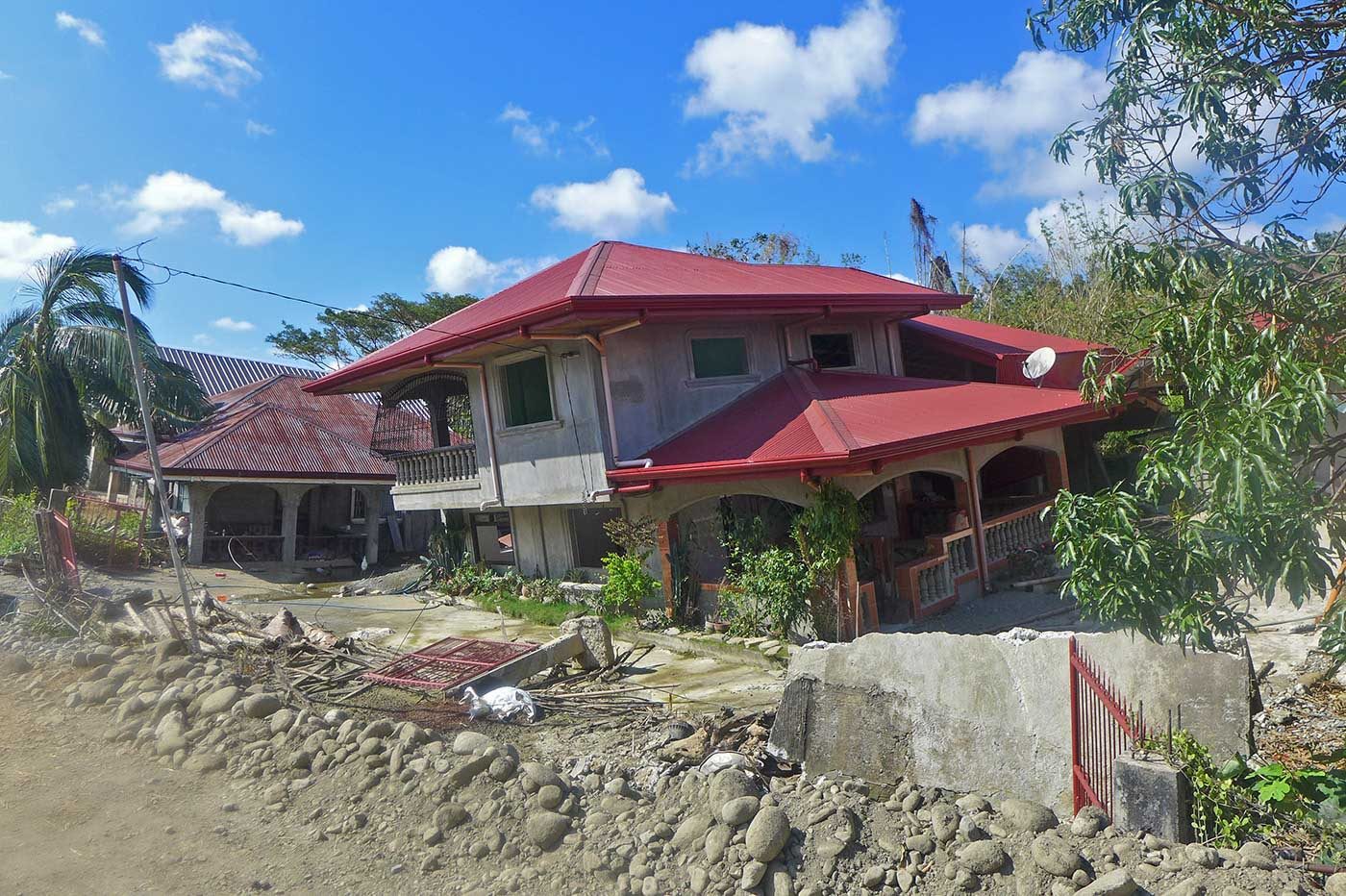SUMMARY
This is AI generated summarization, which may have errors. For context, always refer to the full article.

ILOCOS SUR, Philippines – Amguid is a sleepy, upland barangay in Candon City, Ilocos Sur, known for its deep-red dragon fruits.
In fact, in Zone 2 lives a clan of 3 families – Del Rosario, Tabaco, and Pascitoua – who have known each other for decades.
But last August, the ground in Amguid woke up due to heightened monsoon rains. It was a slow-motion landslide, but still dramatic enough to alarm the residents.
“After 3 days of rains, we noticed the cracks on the road,” Tony del Rosario said in Ilocano. “Then they grew bigger.”
They were asked to evacuate, and this was when the Filipino sense of community and expediency clashed.
Unison
A recent Atlantic report by David Aldrich said that those with tight-knit relationships with their neighbors are less likely to evacuate. (READ: Twin tragedies: How Itogon and Naga landslides are alike)
“Although we’re often told to prepare to meet our own needs, survival and recovery do not happen in isolation. Instead, our social networks – the friends, neighbors, and family whom we interact with – influence our ability to get through a crisis and then bounce back from it,” Aldrich wrote.
Citing studies he made with other social scientists, Aldrich said that those most likely to leave are those with the broadest and most diverse networks when asked to evacuate.
“Those who relied heavily on close friends and family were less likely to do so,” he said.
For places of grave danger like that in Itogon, that was a tragic realization. But for Amguid, it was a blessing of community adhesion. (READ: Ifugao cries the loudest over Itogon landslide dead)
Aldrich said that in studying the mortality rates of tsunami-prone areas in 140 cities, “those communities with the lowest mortality rates were precisely the ones with more trust, holding constant factors including the height of the wave, the age of the residents, coastal exposure, evacuation accessibility, and population density.”
For those in Amguid Zone 2, they predictably moved in unison. “We gathered the women and the children and brought them to safer grounds while we kept watch.”
The Mines and Geosciences Bureau in Ilocos later said that Zone 2 was on thick, unconsolidated materials and highly weathered sedimentary rocks which were saturated and led to subsidence.
After a few hours, not only the road but almost all the houses were either cracked or tilted to weird angles.

Del Rosario said that the men kept watch on the houses, and eventually the evacuation was conducted with order and without much ado.
None of the 45 houses in Zone 2 escaped damage. There were new houses that gradually sank from their own weight, and even houses that seemed unharmed produced cracks as the rains progressed.
Barangay Captain Hermenegildo del Rosario said that while they secured the houses, those who were vulnerable were first brought to their relatives and friends living in other places.
Strong community ties
In their temporary shelters, the 50 or so families acted like an extended family, cooking and working for each other.
Like many families in Candon, many of those in Zone 2 have relatives who are overseas Filipino workers, and these breadwinners also moved together to support their relatives.
Eric Marilao’s family was originally from Yolanda Ormoc, one of the areas hit by Super Typhoon Yolanda (Haiyan). In fact, they lost their house to the typhoon.
His wife is a Del Rosario from Amguid, and they visited her hometown two years ago. His family eventually decided to relocate to Amguid together with his parents.
And then the landslide came. Eric, however, was more optimistic this time.
According to Aldrich, strong community ties are very crucial not during the disaster but after, once depression and rebuilding commence.
All residents of Zone 2 will soon be relocated to a safer, flatter area in Amguid which the city government decided to buy for them. Ilocos Sur Governor Ryan Singson, as well as other donors, promised to shoulder their housing expenses.
But because many of them still maintain their rice fields in Zone 2, they still regularly come back to their homes. – Rappler.com
Add a comment
How does this make you feel?
There are no comments yet. Add your comment to start the conversation.